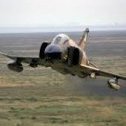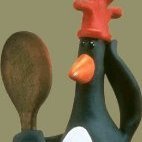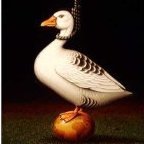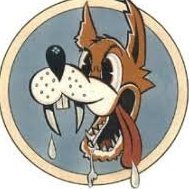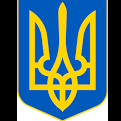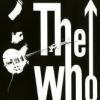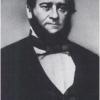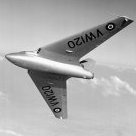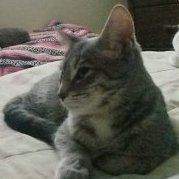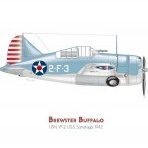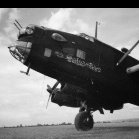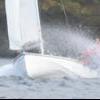Search the Community
Showing results for tags 'revell'.
-
Allright, finnished s build yesterday First Timer Modelship So now continue with the Maritime theme, Modelkit, well picture needs no presentation, got it second hand on eBay, part sealed in bags. Will use AM this time wich i do not do often at all, so this time go all in with AM, all isnignias and markings will be painted, also some scratch. Yes....here it is and here goes. First things first reset the workplace. Nice boxart. Some reference books and all AM that ill use. And the build officially have started
- 51 replies
-
- 12
-

-
To satisfy the Australian element of the GB I have decided on another civillian build and have selected Revell's B Ae146-200 in Ansett colours using a set of Authentic Airliner decals. Here are the box and content photos along with one of the decal set. by John L, on Flickr by John L, on Flickr by John L, on Flickr I hope to make a start on this build soon. John
- 21 replies
-
- 11
-

-
F/A-18F Super Hornet (03847) 1:32 Revell The Boeing F/A-18E Super Hornet is the second generation F/A-18 following on the the F/A-18C. The F/A-18E was developed from the original Hornet and while it may look alike its very much a new aircraft which is 25% bigger. The US Navy managed to keep the F/A-18 designation partly to make the US Congress believe it would be a low risk development from the original aircraft (not the first time in US Aviation this has happened). The new aircraft was ordered in 1992 with a first flight in 1995. The aircraft introduced a new era in electronics including an active electronically scanned array (AESA) radar, bigger displays and a helmet mounted sighting system. To date the Super Hornet has replaced the legacy Hornet in all US Navy operations apart from the USN Aerobatic Team The Blue Angels, and even they will have transitioned by 2021. As well as the E model there is the two seat F model, and the latest development the G or "Growler" Electronic Warfare Aircraft. The Kit This is a new tool kit from Revell for 2019, following on from the F/A-18E to which it shares many parts. It arrives in a rather large box which is packed with mainly rather large sprues. The bigger ones being 60 cms across! The first job on the build is to construct the full length intake and exhaust trunking. Fan fronts and exhaust ends are placed in the trunking and its all buttoned up. The underside of this trunking forms the topside of the main wheels wells and they are built up onto the trunking. The lower main fuselage and lower parts of the intakes are then attached, followed by the fuselage sides (which also contain the top of the intakes). The exhaust nozzles can then be placed on the back of the fuselage, a choice between open and closed nozzles is provided. The lower parts of the main wings (left & right) are then attached to the main fuselage. Once these are on the large single part top wing/body part can be attached but only after first putting in the inserts for the topside airbrakes. We can now move onto the cockpit (normally where we start!) The bottom of the cockpit section forms the roof of the front wheel well and the sides for the well are attached first followed by the front bulkhead. The front cockpit & rear tubs can then be placed on the top. To this is added the instrument panels, and the control columns. The rear seat display boxes are also added at this time. The two ejection seats are then built up and added, The seats are a mulitpart affair, however the belts are moulded in, and in this scale the seat would really benefit PE belts. Once the seats are in the front instrument coaming can also be fitted and the cockpit placed into the forward fuselage halves. The nose cone can be fitted and then the forward fuselage joined to the main body. A main top spine part behind the cockpit is then added. The vertical tails with their separate rudders are then made up and added to the main fuselage with a scrap diagram showing the correct angles for these. Once on the arrestor hook parts can be fitted under the main body. We now move to the undercarriage which is quite complex for the Hornet. The front unit and its wheels are built up and fitted to the front bay, the doors and their retraction struts are then fitted. Both sets of main gear get the same treatment. The main gear doors are supplied as one part and must be cut up into their components for the gear down. The outer wings can either be down or folded up as they would be parked. For these the correct hinge assembly needs to be selected. The outer wings can then be built up and added. The main wings are then finished off. While the centre sections are already there the leading edge slats and trailing edge flaps are fitted. The exhaust nozzles are then fitted to the back. Up at the front the glazing is added. For the main canopy the clear parts fit into a normal plastic frame, An integral boarding ladder is provided if wanted in the lowered position. To finish of the tail planes are added along with a few aerials. Revell provide us with a whole host of things to hang under the wings. As well as the pylons a centre line tank, and wing fuel tanks are in the box. Wing tip missile rails are included as well as AIM-9M and AIM-9X missiles for them. AIM-120C missiles are also provided. In term of things which go bang when dropped 2 x GBU-12, 2 x GBU-31-3B, and 2 x GBU-38s are provided. An AN-ASQ-228 ATFLIR sensor pod is also included. Decals The decal sheet from cartograf (so no issues there) provides markings for two aircraft. F/A-18F Bu No.166873 - "Black Knights" VFA-154 - USS Nimitz 2013 F/A-18F A44-201 No.1 Sqn Royal Australian Air Force, RAAF Williamtown 2020 Conclusion This should make up to a good looking if rather large model, highly recommended for those who like to go big! Revell model kits are available from all good toy and model retailers. For further information visit or
-
I'd like to enter with this please; The riverine war in Vietnam often gets overlooked in comparison to the air war and the fighting in the jungles, but was probably one of the most successful aspects of the US involvement in South East Asia. Operations Market Time and Game Warden both had a significant effect on North Vietnamese and Viet Cong supply routes into South Vietnam. Along with the air war, it is also the part of the Vietnam war that interests me the most. Although the PBR is by far the most well known craft used by the Mobile Riverine Force (or the Brown Water Navy as they became known), the Swift boat was also used in large numbers, and would also be used for coastal patrol. These were all aluminium 50 foot boats modified from an existing oil rig support vessel used in the Gulf of Mexico. They were fitted with twin .50 calibre Brownings above the pilot house, and a combination Browning and 81mm mortar on the stern. With a top speed of 28 knots they were no slouch either. After the end of the war in 1975, a fair number of Swift boats were taken over by the Vietnam People's Navy, some remaining in service to this day. The kit was released by Revell in 2021, following their earlier 1/48 version. The sprues, plus sheet of acetate for the windows; A sample of the very clear instructions; Three options to choose from. Going to go for PCF-65, as I prefer the look of the light grey. Nice set of decals; Plus some research/reading matter; Spent most of last night giving the sprues a wash in warm, soapy water, and working out Humbrol and Tamiya alternatives for the Revell paints listed in the instructions. Given how the boat goes together, I think the airbrush will need to come out sooner than I was expecting, so time to tidy the shed!
- 18 replies
-
- 11
-

-
Hi all I have been wanting to do a vehicle for ages so what better start than a replica of my mate's 57 Bus. Being called 57 there are differences to the later splits. Rear lights, rear tailgate. This one also has Airstream caravan windows, which might be functo make. I believe this might be sunnier and it is similar in layout to a Westphalia bus. I have had the wheels 3D printed for scale correctness. I am using the newer Revell kits forv this, the Westphalia SO42 turret top release for the interior and side windows and the Panel van kit for the roof. I plan on doing this for his 50th Birthday as a gift as he has helped me out with the Porsche and the Fastback and I want to give something back I started by removing the Belly pans as his bus doesn't have them , this meant I needed to corrugated floor so I cut the floor from the front and rear sections and then was able to turn it over. It was all a bit weak at this point so I had to be careful cutting the engine bay section out. Don't worry about the chassis rails as I will make new ones later. There is an oil cooler set up along one of the belly pans on the near side which I need to replicate Cab floor glued along with now upside down floor added , this is now a very strong assembly . Revell provide rounded tubs inside the front arches and these are not presentbon the real thing so they had to go. One down got the other to do . I have removed all of the mounting for the kit rear suspension and drive train ready for a Tamiya Beetle engine and lots of 3D ptinted engine parts plus some scratched bits . The 3D engine bits are lovely and I was helped out greatly getting hold of them by Bruan @rockpopandchips, who was brilliant in getting the online files printed and sent to me. So Brian thank you so much , I really appreciate you help. Thank you for looking in and j hope you don't mind an Aircraft modeller invading the vehicle section. Best wishes Chris
- 24 replies
-
- 20
-

-
- 1/24
- Replica of a Mates bus
-
(and 1 more)
Tagged with:
-
Hi all, I've now been given the go ahead by Luke to be able to share images of my current build of the above mentioned. ***Please note, this is a prototype test shot and so anything you see posted is subject to potential change before final release.*** For now, here is an overview of my progress after around 8hours of work with the cockpit built up along with most of the wing and fuselage sections ready to go. This kit is amazingly detailed, fits beautifully and I have had zero issues so far. I will post updates as and when necessary, mainly sticking to major milestones. I will not do the final reveal until after the IPMS Avon Show at Thornbury on 03/08/2025 so if you wish to see it, please come to the show and view it on the Revell stand. I shall reveal it here at an unspecified date there after. See you all soon for another update!
-
This was a present from an Auntie (bless her), doubt she realised how small it was 😂 Not sure this is my best idea, as i am currently considering moving from 1/72 up to 1/48 to avoid small parts. Oh well whats to lose apart from maybe some tiny parts! And the miniscule parts No mention of the Swiss decals in the instructions, but i think they used the same camouflage as the RAF version. The moulding actually looks pretty good. Hopefully it will go together better than my current build of the Xtrakit Hunter T.7 in the 80's GB!!! George
-
Aston Martin DB5 007 Goldfinger (05653) Easy-Click System 1:24 Carrera Revell Aston Martin’s Grand Tourer, the DB5 rose to prominence above almost anything they had produced to that date or since, when it won a starring role in the James Bond film Goldfinger, driven by Sean Connery as the eponymous hero, fitted with guns, oil-slick dispensers, bullet-screen and an ejector seat to name but a few of the gadgets used. Like all of Jimmy’s cars, it ended up in a tangled heap, crashed into a building, and JB in the hands of the bad guys, which is a surprisingly common outcome for such a supposedly accomplished spy, although he always manages to escape. Developed from its predecessor the DB4, the DB5 was so named after the owner of the company David Brown. The engine was a light-weight aluminium straight-six block with three carburettors that propelled it to over 140mph thanks to its 280bhp output that was sent to the rear wheels via a 5-speed gearbox that was bought in from a third-party to solve previous problems that their home-grown box had encountered, although a four-speed box was used in early editions. It was also available with a 3-speed automatic box, but who’d want that unless they had leg issues? Like modern Astons, it was lavishly appointed, with leather trim, thick luxurious carpeting, and traditional chrome wire-wheels with knock-on/off nuts. The magnesium alloy body had two doors, and could seat two comfortably, with additional space for children or adults with no legs, and luggage in the boot. It was initially launched in 1963, and the production run included a small number of custom-built cabriolets, some of which had more powerful Vantage engines, and at the very end of production some were kitted out with the upcoming DB6’s engine. During its last year of production in 1965 they released the Vantage option with an extra 40+bhp of power squeezed out of the engine thanks to improved carburettors and more aggressively profiled camshafts, with only 65 being made before the DB6 replaced it in their line-up. The DB6 was an evolution of its forerunner, with improved aerodynamics and luxury, developing into a closer representation of the later DB series cars that we’re probably familiar with from our childhood and beyond. The Kit This is a new tool Easy-Click System kit from Revell, designed to be built by novices or experts alike, requiring no glue unless you feel the urge, and including a set of five thumb-pots of acrylic paint and a two-ended paint brush. You also receive a folded A3 poster of the box art without the trappings required for the packaging, which you can hang on the wall if you wish. Inside the end-opening box are four sprues in black styrene, three sprues and the bodyshell in muted silver, one in dark grey, two chromed sprues, a clear sprue, four flexible black tyres, decal sheet, sticker sheet, and instruction booklet that is printed in colour, and has the painting and markings guide on the rear pages. Though this is a snap-together kit and comes with both decals or stickers for the younger audience, detail is good for a kerbside model, and it includes some of the gadgets that Mr Connery used in the movie, such as the bullet-screen, ejection seat opening in the roof, and the extendible axles that tore the side out of the baddie’s car during a frenetic chase. Construction begins with the floor pan, which has a silver insert that depicts the underside of the engine and transmission using two parts, over which the suspension struts are added, pivoting the front axles with moulded-in brake disks and their connecting arm, then layering a sub-frame over it before moving on to the rear axle. The back axle is bulked out with an insert in the centre that creates the differential housing, fitting suspension struts and dampers into the rear of the floor pan. The twin down-pipes from the engine are placed side-by-side along the centre of the floor pan, then attention turns to the interior. The front seats are each made from an L-shaped part with pencil quilting that has a rear panel inserted, while the dashboard has the steering column and wheel inserted into the right side, adding eight decals or stickers to the dials, and another to the centre of the steering wheel and centre console. The interior floor is a grey part that receives the rest of the internal assemblies, starting with the gear stick, which has a choice of standard or 007 variants with the cap open displaying the red button. A choice of centre armrest with alternative open rest that has gadget buttons in it is made next, then the driver’s foot pedals are snapped into the right footwell, popping the front and rear seats in behind. The door cards are both fitted with inner handle, while the driver’s side has another secret pocket that can be fitted open to display more gadgets. They have a decal applied, and are clipped into the sides of the floor, held vertically by the dash that is installed at the same time. The completed interior is inserted into the bodyshell after adding a rear-view mirror above the windscreen, and if you’re going for realism, there are quite a few ejection-pin marks around the perimeter of the roof liner that you may wish to hide with filler. A black inner wheel well insert is added forward of the interior while the body is inverted, and at the rear, three clear lenses are clipped into the corners to create the light clusters, painting the lenses the appropriate clear colour. Naturally, there are alternate bottom lenses depicted flipped open to display the barrels of the rear machine guns. The front and rear number plate holders are built with a rotating prism held inside a frame, adding the bumper and boot handle at the rear, plus slide-out over-riders that are held in place by a pair of washers inside. The front bumper is installed after the bodyshell and floor pan are mated, fitting a front valance to the rear of the bumper, and adding the same kind of slide-out over-riders either side of the rotating number plate holder before fixing them under the front of the vehicle, and slotting the distinctive chromed Aston Martin grille into the centre. Side lights or machine guns are fitted into the front wings, and the headlight lenses are too, once the inner lens and chromed reflector are fixed into the recess. The wheel hubs are built from three layers, the rear of the hub in black, and the wire wheels in chrome, trapping a top-hat washer in the centre that friction-fits on the axles. The flexible tyres are slipped over the hubs and attached to the model, one per corner as you’d expect. The windscreen is carefully inserted from outside, helping it along by inserting your index finger (other fingers are available) through the ejection seat hatch to ensure it doesn’t fall inside. The rear screen can be inserted similarly, adding the side windows from the outside. It’s worth noting that the side windows are supplied as a single part, including both the door window and the quarter-light, and locating on a pair of tabs that clip into the sills of the bodyshell. External chromed door handles and the wing detail inserts are applied to the exterior side, and you have a choice of installing standard knock-off wheel nuts, or the 007 weaponised versions that project from the centre of the wheel on a tubular support, by using different chromed parts. More chromed parts follow, including the aerial base, a pair of windscreen wipers, and wing mirrors, not forgetting the hatch through which your unfortunate front seat passenger would be ejected should the need arise. You can pose it closed by using the part, or leave it off to show off the interior better. The last standard parts are the twin exhausts that have the back box moulded in, clipping to the end of the down-pipes under the body. The 007 specific gear is finalised by sliding the bullet screen behind the rear window, which slots into the rear bodywork, and can be fitted with a decal or sticker that portrays some bullet damage for a little movie frivolity. Next to the exhausts, a black tube is inserted into a hole in the valance, and if memory serves, this is the oil dispenser. It’s a while since I’ve seen Goldfinger. Markings This is a special edition, so there is only one option on the decal sheet, although there are alternative number plate options for those rotating plate holders. From the box you can build the following: Decals are by Cartograf, which is a guarantee of good registration, sharpness and colour density, with a thin gloss carrier film cut close to the printed areas. It’s not clear who printed the stickers, but they seem well-done and fit for purpose. Conclusion Sean Connery played a colder and cooler Bond (controversial!) than his replacement, and the DB5 cemented its place in motoring and movie history by appearing in Goldfinger. It’s a good-looking model of the car, and should provide some fun for the novice and expert alike, choosing which of the gadgets to deploy on your model. Highly recommended. Carrera Revell model kits are available from all good toy and model retailers. For further information visit or
-
Hi everyone, With Nuremberg Toy Fair officially underway, I've been given the go ahead by Luke at Revell to share this top secret project! I was honoured to be given the opportunity by Luke, to build the very first test build of the new Meteor in 32nd by Revell. This is the first full 3D printed build up of what will become the kit later in the year, hence why the surface may look a little rough, as it is 3D printed and not plastic injection moulded yet. Luke was over the moon when he collected it as this is the culmination of hundreds, if not thousands of hours of work, to finally be able to see it built up for the first time. This is now on display at Nuremberg Toy Festival over the next few days for the modelling world's eyes to view. I'll post some more detailed photos in the coming days on my Facebook page linked below so that people can see the amazing detail on the engine, wheels bays and more. Thanks again to Luke and Revell for this and I can't wait to crack on with the other builds that will soon fly my way! Disclaimer - This is as finished as Revell wanted it... in Primer to show overall shape, size and details only. This is the very first full 3D print with no plastic parts and so surface detail is not final. https://www.facebook.com/jamesbuildsandmore/
- 23 replies
-
- 69
-

-

-

-
Hi all, Bit of a downer to start with... Following a rather distressing first quarter of 2025, I took an enforced break from work and embarked on a programme of de-stressing and mindfulness to try to get back to something approaching normal life over the past 8 weeks or so. Part of the fallout from that episode was that I was finding modelling too stressful, given that I like to build big projects with lots of aftermarket and photoetch. For that reason, I had to lay aside my Nimitz build and have been not-modelling for a prolonged period 😭 Luckily the modelling itch has started to come back, and I thought it would be nice just to do a pleasant, colourful, out-of-the-box build of a subject that suggests frivolity. partying and relaxation. So for that reason I've started the Revell AIDA cruise ship in 1/400. Look at that paint scheme! A ship with kissable lips! What's not to like? AIDA is a German subsidiary of the Italian cruise giant Costa Crociere, which is in turn owned by industry behemoth Carnival Cruises. The 4 ships of the modified Sphinx class are registered in Genova, Italy. Primarily aimed at the younger tranche of the vast German cruising market, AIDA boasts ecologically-friendly cruising with an emphasis on fun, physical activities and wellness on board. So that sounds like the sort of thing I should be focusing on right now 😅 First glance suggests this is an excellent kit: It's a big model, just over 63cm/2ft long. The hull is in two halves and most of the kit is moulded in white plastic. The other sizeable portion of the parts is in clear. In fact I've never seen a kit with so many clear parts. There are lots of really nice details in the box, and I can see this will build up into an impressive rendition of these modern cruise ships. Also there's that lovely box art: I guess it's not everybody's cup of tea, but then neither am I 😃 The ship comes in four flavours: the AIDAblu, AIDAsol, AIDAmar, and AIDAstella. They're effectively identical apart from a few small differences. I'll be building this as AIDAsol, which, despite its name, is based in Hamburg, Germany and mostly plies the northern routes from Bergen to the Bay of Biscay. This means she is a frequent visitor to our shores and in fact was at Portland just the other day: Dorset Echo article Anyway - it's supposed to be a therapy build. I'm trying novel techniques (for me) such as following the kit instructions, using Revell's paints and callouts, and just trying to have a good time building something for aesthetic appeal and feelgood factor rather than the big, ambitious vanity projects which I'm used to. I've just made you guys part of that therapy now, so I'm sure your wit and wisdom will contribute to my smooth recovery 😂 All the best, Alan
-
It's that time of year again when I find all sorts of new projects making their way towards the workbench...! I know I have plenty on the go already, but most of these are awaiting paint which requires better weather - I spray outdoors and need warmer, drier conditions. As @Paulaero will understand, these other models are generally at least 95% built, which qualifies me to start on something new in the meantime! 😁 This build is partly a new challenge and a bit of repetition too. The new bit is refurbishing one of my older models and this will form the bulk of this thread. The repetition part is concurrently building two untouched Revell 767-300 kits, which I did here a couple of years ago and I don't see any point in documenting it here again! However, these kits will throw up a few challenges along the way (more on this when I get to those parts!), hence their inclusion into this thread. Let's start with the model to be refurbished. I would guess that I built it around 20 years ago, when my modelling skill set was rather more limited than it is now. It is the Revell 767-300, with RR engines and built to depict G-BNWA which I flew regularly at back in 2003. The model has been in the attic for years and I think it must have been dropped at some point too - luckily I still have most of the pieces: It's certainly been neglected and the attic did it no favours - it's covered in grime: The refurbishment will consist of the following tasks- 1. Open the fuselage up and fill the windows with Milliput 2. Removal of the damaged undercarriage and rebuild the model with the gear doors closed 3. Replacement of the missing windscreen (the only piece that I cannot find!) 4. Removal of the old paint and re-spraying with an accurate demarcation line and correct shade of blue 5. Production of custom decals to give the model a new identity To complete this introduction, the other two models in this build were purchased cheaply but with a few pieces missing. More importantly though, they both have the sprues for the RR engine option, so these will be built as BA aircraft. Here are the sprues: And another shot, showing the first task completed - Milliput is applied: It is well past its 'use by' date and quite dry and crumbly, but perfectly good enough for this job!
-
Hello friends, new build Belgian Army Revell Unimog 2T milgl with lot of addons Def.Model wheels MAD-Modellbau cabin Perfect Scale U1300 Ladefläche Personentransport Blast Model machine gun
-
I've recently mentioned this in the Modelling and purchase plans/wishes for 2025 thread. It's a kit I bought for my dad to build in the hope that it would be good at a larger scale. The reality was, it was just too complex and fiddly and in the end he barely got started on it. He died in November and my mum mentioned that it was still sat at the box, so I decided I'd finish it off for him. Here's what we have... Here's what was in the box... And here's what has been started and the tools that have been used What I always look for in a sprue cutter is the ability to also cut carpet My dad was an extremely practical and resourceful man who had pretty much every tool you could possibly need. So I feel like my mum may have had a hand in this particular decision. As for the build... If it was just my build, I'd be thinking of something like James Rudland’s Outlaw Racers Porsche 356 Coupé but, even in his younger days, this would have been too 'form over function' for my Dad. In terms of real cars, he'd lower them and fit wider wheels to improve handling more than looks. So, really, I think I'm going to build it OOB (maybe a smidge lower 🤔) with a couple of nods to my dad. One will be the registration plate that belonged to his Mini and the other will be a dark blue (in my case Porsche Manaus Blue) similar to the colour of the kit car he built. The next step is to try and dismantle what has been built and paint it. Thanks for looking Martin
- 96 replies
-
- 24
-

-

-
Hi, Please find the Revell 1/32 Westland Lynx in Dutch service. The kit was converted to a SH-14D using the Mk 88 and HAS 3 boxings. The kit was more or less finished early this year, but with the kit’s basic conventional rotor configuration. Only recently have I come round to change this to a folded rotor blade configuration using the Scale Warships conversion set. The port side engine compartment was opened and a resin engine added. The dummy torpedo was modified with detail added, using parts of a 1/48 A.M. Avenger torpedo. Although, perhaps an unlikely weapon combination, in addition a machine gun with platform was added to the starboard side. The machine gun was used in some operational situations. (Ref. YouTube search for: boardingteam Tromp Taipan) Since the 1/32 Dutch Decal Lynx sheet was unavailable, I asked Heli Scale Quality to print the decals for me. I supplied various images and they delivered. The decals are now available on their site. Paints by MRP I found this to be a very nice kit. The only critique I have was the use of white plastic, which for some reason wasn’t too pleasing to the eyes. Luckily the HAS 3 boxing has many more grey plastic parts in the box, but this is just personal. The Build report link is posted at the bottom of this post. Comments, critique, feedback are all welcome. Pictures were taken outside against a white vinyl sheet backdrop using an Iphone. With clouds passing you will notice a difference in image colours. The IPhone camera made most photos a little darker than they are in reality. The model is unfortunately too big for my photo box. 📷 Warning: picture heavy The “Work in Progress” report: Thanks for watching, Regards, Rob P.S. This build was inspired by Mr. Vreeze a Dutch model builder who built a 1/32 Lynx a few years back. Just loved the look of his Lynx. To not engage in a mere copy, I decided to fold the rotors.
- 12 replies
-
- 47
-

-

-

-
This the RFI for my Catalina I should be able to put a link here to the WIP, but somehow I'm to incompetent.. Well, to summarise: I got this Cat almost completely build, with some things missing. Got great advice here and started by removing all paint. It's a Revell kit and I found the building instructions at Scalemates. I used a decalsheet from Dutch Decal. For the blue I used Humbrol Pru Blu 230, for the black Panzer Grau of vallejo, and the light grey is also from Vallejo. Well, here it is; a Dutch Catalina of no 321 Squadron Royal Netherlands Naval service serial Y-45 in Rose Bay, Australia. I hope you enjoy the result: Now I need to find a place to display it. It's huge..
-
Here's my first ship build, something I thought would be a quick easy ish build in between several aircraft kits. I start this RFI by standing, bowing, and intoning "oh those who make 1/700 or 1/600 scale ships, I salute your extraordinarily acute vision, tremble free hands and 20/20 hand eye coordination" Because goodness me, 1/350th very near wrecked my modelling spirit completely! It was all fun putting the hull together, then the various diving planes, then the propellor supports; then I saw the instructions say put part numbers 11 on part number 9 and 10. I looked on the sprues for parts number 11 - couldn't find them. Then looked at the part numbers on the sprues and found them. Uhh? I exclaimed, those are propellors? They looked like two of the little bits of deformed plastic after you'd cut a part off! Gulp - proceeding with extreme care, and resting on some blue tack, I managed to cut the tiny propellors off without losing them. And managed to stick them on without losing them. I know that back in my mid teens I made Airfix's HMS Tiger, which I think is 1/600th scale, and given I was probably about adult size then, I have no idea how I coped with the tiny - incredibly tiny parts there must have been in 1/600, because I sure as hell haven't coped well with some of these parts in 1/350th! I bought this kit on a whim at Hobbycraft; marked up as a tenner, I actually paid £7 for it. Now those of you who have built this kit, will probably say "You wuss, it was a lovely build, and easy peasy!" I repeat, until I got the propellors and conning tower it was a bit of fun! Trying to put the gun together; even with a steadying reverse tweezers that hold pieces I found it hard work. And then the gun platform rails; oh boy, I couldn't get these to stick to the gun platforms until I used a toothpick with a dab of superglue on the end. Except that one such piece of railing pinged off into the maw of the kraken * never to be seen again. (* Nautical name for the carpet monster) You'll notice the gap on the photos. Then painting. Oh dear, you need steadier hands and better eyesight than I have - even with my magnifying headset on! I did start to do some rust marks - then stopped very quickly because they don't look very good. The other paint masking at this scale was a touch difficult! However, I have chanted the phrase I now chant at the conclusion of a build - copied from a Britmodeller sage whose name I don't remember - "Finished is better than perfect"! So here are some photos of my completed U Boat in minature scale ! Thanks for looking.
-
Even though I mainly make things with propellers, I actually signed-up to this Group Build because I have more Starfighters than I ought to have. Anyway, I'm going to assemble this one: It's the Revell kit and i believe is has an issue with the front canopy shape (which I am going to ignore). I'm going to do it as one of the 435th TFS planes based at Udorn, Thailand from June 1966. As they were used for CAS missions (as well as CAP), I'll dig some M117s out of the 'things that go bang' box and hang them under the wings. I'll probably start this after finishing the F-16B I'm currently making a mess of in that Group Build. In the meantime, here's an interesting piece about the F-104s use in South East Asia: https://www.i-f-s.nl/vietnam/
-
Hello, after a bit of research you can see in this previous topic, I'm finally ready to start a project I toyed with more than I care to remember. When I was a young student, I used to visit a big bookshop in my town which had a rich aviation section to browse the books and look for something really valuable before purchasing. During one of those visits I stumbled upon this title, which being full color was quite expensive for my meagre finances, but I did not forget one of the aircraft in it, a quite old and battered PB4Y-2 Privateer converted to the drone mission and painted overall insignia red. Fast forward about 35 years... I regained interest in this subject when my local club decided to choose the B-24 and derivatives as the subject for this year's display. I already had a Matchbox kit in my basement, an essential ingredient to the project since it is now going for stellar prices even in its more recent Revell box, and some aftermarket to improve on the mediocre quality of the basic moulding. What I still missed after all those years were references, and with the help of @Sabrejet I made a small progress after purchasing "Point Mugu Test Centers" by Angelo Romano. Overall there are still too many black spots in the history of the drone Privateer and I wonder why so little has been documented, but I think I have to draw a line and be happy with what I have. So, without further ado, this is the box contents. Forgive the low contrast, I didn't realize this frame is nearly the same colour as the cutting mat! More will follow with my findings about the kit: I'm now convinced that at least 80% work will be on obtaining a decent Privateer and only 20% will be converting to the drone variant. For anyone interested, refer to this very informative thread by @Navy Bird who tells his experience with the kit and the Cobra Company resin correction set: I don't have it but won't regret it much after reading his comments. For a start, see how I got even a short shot in the right underside wing half on top of all the other inaccuraccies. Thanks for reading!
- 30 replies
-
- 12
-

-

-
... Did I do something wrong here? I'm building the 1:72 FW 190 kit from Revell, everything's going together more or less fine, then the rear canopy goes on like this: I'm totally thrown for a loop here, I can't get it to fit with either the frame or the front canopy, and trying to split the difference makes it look even worse. Did anyone else have this problem or did I miss something totally obvious?
-
A question for those more familiar with the various F-16 kits out there, specifically ESCI's F-16A as compared against the Revell kit. I wanted to get a Revell F-16A kit and as the only ones currently available are the MLU versions, I picked up an ESCI F-16A kit. It is very well done with respect to surface details. There are a few areas that I will tweak with some aftermarket bits, but overall a well done kit, especially when you consider how long ago it was when the kit was issued. That brings me to my question. Does the ESCI kit represent a very, very early A? Particularly when it comes to the area that is directly behind the cockpit and including the rear portion of the canopy? I ask as when compared to the Revell kit, ESCI in this area is flat and there is no "step", while Revell (and other kits) has a "step": ESCI Revell If someone could clear this up for me that would be most helpful.
-
Good day, This subject was suggested to me from a good friend. The highlights of this particular project are as follows…………….. 1. Exhaust section A. Open / end side of nozzle : Gunze Burnt Iron ( base color ), Gunze Silver dry brush on ends. Tamiya Copper XF-6 dry brush. Tamiya black wash B. Inner section : Tamiya Metallic Grey XF-56 ( base color ), Tamiya Gold X-31, Tamiya Purple X-16 dry brush, Tamiya black wash C. Heat shield : AK Extreme Steel, Tamiya black wash 2. Airframe : AK Air ADC Grey ( #AK11867 / FS16473 ), Ammo Light Grey Wash ( #A.Mig-1600 ), Tamiya NATO Black XF-69 Anti Glare panel, Tamiya Flat Black XF-1 Nose radome cover, Tamiya Black X-1 Flir end 3. Cockpit A. Ejection Seats : AK English Grey #AK11020, Tamiya Black wash, Gunze Silver dry brush, Tamiya Olive Drab XF-62 seat cushions, Tamiya Khaki Drab XF-51 seat belts. B. Interior : AK Air Dark Gull Grey ( #AK11884 / FS36231 ), Tamiya black wash, Tamiya Titanium Silver X-32 dry brush 4. Landing gear struts, bays & intake : Tamiya Flat White XF-2, Tamiya Chrome Silver X-11, Tamiya black wash 5. Decals : Caracal F-101B Voodoo Air National Guard #CD72011 6. Misc : True Details resin ejection seats, Master metal nose pitot tube, plumbers putty & fishing sinkers for nose ballast Despite the age of this kit, I found it to be still up to modern standards of very good fit between parts, fine recessed panel lines, and excellent detail. The instruction sheet was a bit vague but workable and pretty much straightforward. I added True Details resin ejection seats as the ones provided with the kit were very basic in detail. I chose not to weather this one too much as ANG aircraft were kept somewhat clean for the most part. Oddly, the nose landing gear was too “short” and fabricated some scrap sprue into an extension in order to have the airframe sit properly. Unfortunately there are no alignment pins for any of the three landing gear struts but they hold well after overnight setting. I tried no less than four different color combinations to find the appearance that I was seeking with the exhaust sections. What I listed in the highlights is what I felt looked best. Apart from the landing gear assemblies, this is a very nice kit. It`s too bad that it has been out of production for so long as the F-101 is a subject lacking in 72nd scale. I recommend it to those with a bit more experience. Thank you in advance, Mike
- 26 replies
-
- 69
-

-

-

-
With the Jet provost done and the other activities out of the way, it’s time to get back in the saddle and do some more modelling. For a bit of a mojo boost, I watched Top Gun, Top Gun Maverick and The Final Countdown on DVD’s. So tonight, out came the Airfix F-14A Tomcat (blueprint box) and the Revell F-14D Super Tomcat from the stash - both 1/72. I’m going to try to build them both together stage by stage (rather than build one and then the other). The Revell is better in detail as it’s a much later kit, but the Airfix one still has a certain charm to it - even with the raised panel lines which I’ve decided to leave to see how it turns out. So, the first stage was to build the two cockpit tubs. The Airfix one is much longer then the Revell and both have raised detailing in the some consoles in roughly the same depth. The ejection seats are worlds apart in detail, so I might see if I can 3D print something a little more interesting for the Airfix kit. Otherwise the offices are fairly well detailed considering….. Both tubs were painted with Tamiya XF-19 Light Grey (as it’s what I had to hand) and are drying off. They will both receive other colours to highlight the consoles and IP’s. I’ve also bought an extra set of Airfix F-14A decals which offers two options - TopHatters and the Black Aces - to go with the Bounty Hunter and Grim Reaper options for the kits.
- 82 replies
-
- 14
-

-
Hello fellow modellers, welcome to my first WIP! The kit I’m working on is a Revell 1/32 Mirage III: This was a surprise Christmas present from my wife, I hadn’t built a single model for over 30 years! So, I was to build this shiny Mirage, but to be honest it didn’t quite appeal to me. Of course, its livery is splendid… …but I never saw this particular jet ‘in the wild’. The decal set offered two alternatives, an Australian version… …and a French Mirage IIIRD: In 1984 I visited Gilze-Rijen airbase to witness the NATO Tactical Air Meet, which was an impressive event with masses of different aircraft types and numbers, like Canadian Starfighters, RAF Jaguars and Phantoms, USAFE F-4s and F-15s, Belgian F-16s and Mirages, German F-4s, and French Jaguars and... Mirage IIIRDs! One of these Mirages was Mirage IIIRD 368/33-TQ: To keep the memory of this exercise alive I decided to build this particular reconnaissance jet. I joined britmodeller.com in January 2021, but I never intended to start a WIP because I was quite intimidated by the high skills and superb results by most of you lot. However, @The Spadgent appeared to build a similar kit, check... ...and he and @81-er encouraged me to show some of my progress, too. So, here I go! First an overview of my desk, with the supplies spread out to give you an idea: Documentation (the upper photo was taken during TAM 1984 too, by a good friend of mine): Aftermarket stuff: And what I've done so far. The manual warns for the danger of tail sitting for the E and O version, but to be safe I added a redundant nut to avoid this for the RD version too. The 'inside job': My box with preliminary stuff: And for the final result, I decided to add the pilot as well. Meet Jean-Claude: He is supervising my progress: That's it for now. I hope I can entertain you with upcoming posts, and feel free to comment! Cheers, Rob
- 43 replies
-
- 22
-

-
- mirage III
- 1/32
-
(and 1 more)
Tagged with:
-
Anybody else bought this? I just received mine which I'd bought mainly on the promise of the Daco designed decal sheet, I've got several other decals designed by them for the 146 and they all include silver metallic decals for the leading edges, ailerons and elevators - I was rather disappointed to find that although they're shown in silver metallic on the Revell promotional shots and decals for these are on the sheet, they're printed in a very pale grey/off white. Is it just me, have I got a sheet that missed the silver print, or are they all like this? PS The decals for the passenger window silver surrounds appear to be just carrier film, looks like my sheet at least completely missed the silver print pass 😞
-
Hello all ! Here is my take on Sgt Peter Durnford's Spitfire Mk.Vb Night Fighter, JU-H (W3848) of 111 Squadron, Debden, December 1941: Kit used for the build was Revell's Mk.Vb, a kit which to be honest, I was pleasantly surprised with. Overall, it's a great little kit with sublime recessed detailing and a very good shape, but which seems to get little RFI exposure. I decided to improve a bit on this detail by fully riveting the fuselage and wings. The only real let down were the upper wing cannon blisters, which were awful. These were removed and replaced with the ones used in the earlier Revell Mk.V kit, where interestingly, they are separate items. Addons Used: Replacement De-Havilland propeller Eduard PE harnesses & belts Quickboost resin exhausts (for Tamiya kit) Rob Taurus vac formed sliding canopy (for Tamiya kit) Pilot from Airfix RAF Personnel set Many scratch built items IFF aerials donated by my wife. There seems to be a lot of debate as to whether these night fighter Spitfires had their upper wing roundels painted over or left on. To be honest, I couldn't garner a consensus, so I hedged my bets by masking and spraying the roundels, then overspraying them so that they were still there, but barely visible. Unfortunately, this effect doesn't seem to have come out too well in the photos, unlike the dust, which seems to appeared from nowhere !!! Paints used were all acrylic from Vallejo, Humbrol and Mig Ammo. Varnishes were Pledge, Mr.Aqueous Gloss and Winsor & Newton Galeria Matt. Weathering was a Flory wash followed by oils and Tamiya weathering powder. Decals were a combination of Xtradecals for the coloured 'bits' and Ventura for the lettering. Thanks for reading and taking the time to look. Comments and critiques will be most welcome. Gary




